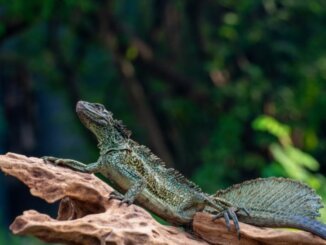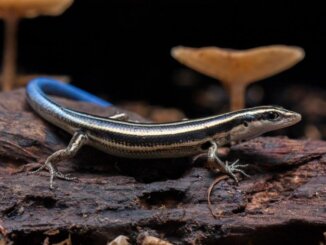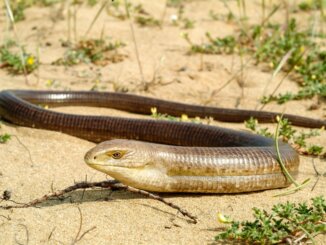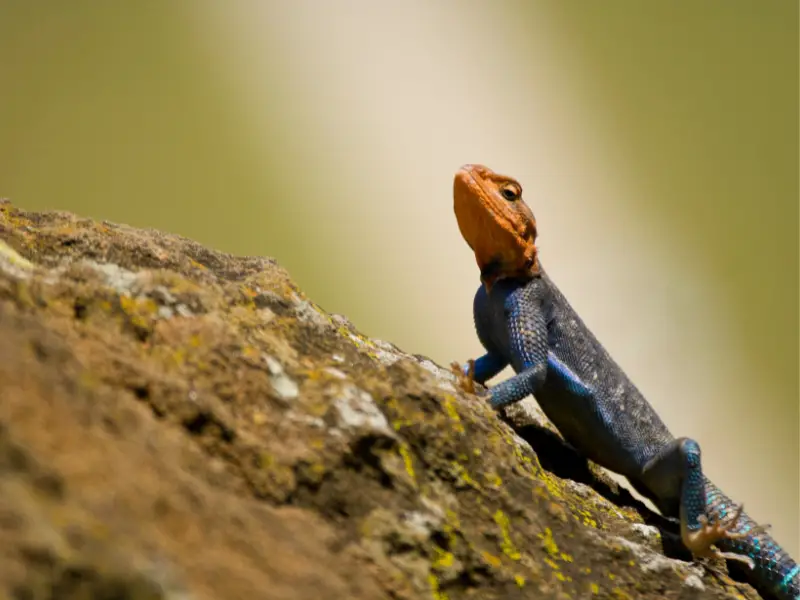
The red headed agama is a medium-sized lizard from sub-Saharan Africa. They are famous for their brightly-colored heads, which can be orange to red in dominant males.
Red headed agamas can live up to 20 years and are often kept as pets as they are fun to observe and relatively easy to handle.
These reptiles are also easy to care for, making them good options for owners with entry-level to intermediate experience.
Overview
| Common name | Red headed agama, common agama, rainbow agama, or red-headed rock agama. |
| Scientific name | Agama agama |
| Natural habitat | Savannas, deserts, mountains, forests, and even urban areas in sub-Saharan Africa. They are also native to other countries like India. |
| Adult size | 5.1 inches - 11.8 inches |
| Average lifespan | Up to 20 years |
| Diet | Frozen mice, worms, and crickets |
| Housing | Vivarium (approximately 2-foot by 3-foot). |
| Experience | Beginner to intermediate |
Origin
The red headed agama (Agama agama) is native to sub-Saharan Africa and can be found throughout most of this region.
Countries that are home to the red headed agama include Benin, Cameroon, Gabon, Guinea-Bissau, Mali, Senegal, India, Burkina Faso, Cape Verde, Ghana, Kenya, Mauritania, Togo, Madagascar, Uganda, Chad, Guinea, Liberia, Nigeria, and Tanzania.
Since these reptiles were introduced to Florida through trade, they have become very common in the surrounding area.
Agama lizards are very common and are considered a species of the least concern. They are in no danger of extinction.
These reptiles can live in many different habitats, such as savannas, deserts, mountains, forests, and even urban areas.
Although they adapt easily, they typically prefer hot and arid conditions. They tend to live on rocks and in between rock crevices. If they live in urban areas, they often choose to inhabit huts and gardens.
Appearance And Behaviour
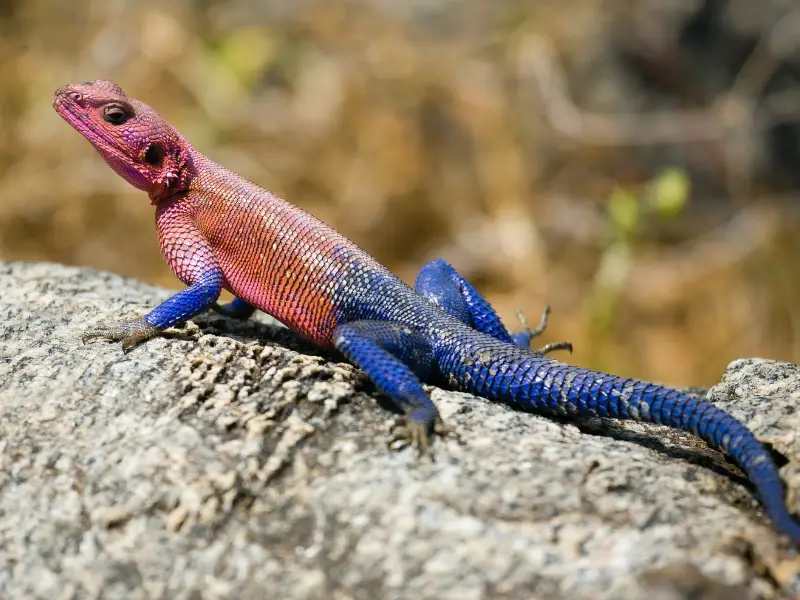
Despite the name, not all red headed agamas have red heads. While some of the males do, others have heads that are more orange in color.
The rest of the male’s body is also brightly colored and is usually deep blue with white dots scattered across the back.
The deep blue often turns into a bright, light blue towards the tail.
There is a black patch under the throat. This is sometimes just a small region by the chest, but can also be the entire throat.
Interestingly, the colors of these reptiles are more vibrant during the breeding season. Their colors can also fade when they are frightened.
Their bodies will fade to brown, although their faces will still be tinted with orange.
Females are usually a shade of gray-brown or olive green, with cream-colored bellies and little dots of red scattered across their backs. Some females may also have white markings.
Size And Lifespan
The average size of a red-headed agama is between 5.1 inches and 11.8 inches. The males are typically larger than the females. They are, on average, 3 to 4.7 inches longer than females.
The average lifespan for these reptiles is around 10 years, although they can live for longer than 20 years.
Temperament
Red headed agamas are diurnal. This means that they sleep at night and are active during the day. If it gets too hot during the day, they are likely to sleep for an hour or two.
They spend their days basking in the warm sun or hunting their prey. Males are called cocks, and can be incredibly territorial.
They will compete with other males for their territory.
However, they are social creatures. Their groups usually consist of one dominant male and about 6 others (subordinate males and females).
If the subordinate males defeat the dominant agama lizard in a fight, they will become the dominant male.
They can also become the dominant male of a new colony if they leave their group to establish their own in another territory.
The males usually mark the center of their territory with an object upon which the agamas congregate. This is typically a boulder or tree.
Red headed agamas are not aggressive towards humans although they can be a little jumpy when being handled for the first time. They can become quite tame with regular handling.
These reptiles are also not venomous or poisonous. So, if your new pet agama does end up biting you, simply wash the affected area with warm water and soap and check for any signs of infection.
Housing Red Headed Agamas

Red headed agamas are an active and social species that like arid conditions. This is something to bear in mind when housing them.
Because they are social creatures, it is best to keep more than one at a time. Ideally, they should be kept in groups of three.
It is easiest to keep one male and two females (called a trio), as this prevents any dominance disputes.
Enclosure Size
Agama lizards should be kept in vivariums. They love space so the larger the better!
If you have one of these lizards, the tank should be at least 2 feet by 3 feet. Two to three adult agamas should be kept in a tank that is at least 100 gallons.
If you’re breeding these lizards, hatchlings should be kept in a 20-gallon tank.
Having lots of floor space in the enclosure is more important than height, so try and give your agama(s) as much room to run around as possible.
Lighting
When it comes to light, your agama should have a basking light, a UVB light, and a reptile bulb. The aim is to mimic natural daylight as much as possible.
Keep the lights on for 12 hours during the day and turn them off for 12 hours at night.
Temperature And Humidity
Agama lizards are ectotherms (they are cold-blooded). This means that they require heat from their environment to regulate their body temperatures to stay alive.
So, on top of the light, these reptiles need heat in their enclosure.
The ambient temperature should be between 80 and 86°F. Then you’ll want to create a basking area that is about 90°F.
It’s a good idea to use a heat mat, as this will keep the enclosure’s temperature constant. Try and avoid heating rocks though as they can burn your agama!
At night, the ambient temperature can drop to 75°F.
Aim to keep your humidity levels between 40% and 60%. Use a hygrometer to keep track of your humidity levels and ensure the enclosure doesn’t get too humid.
Substrate And Decoration
The bottom of your agama enclosure should be lined with wood chips, sand, mulch, or coconut husks. You might want to put some newspaper below this!
Agamas love hiding places, so try and give them at least three little hiding spots.
Hidey holes don’t have to be fancy – you can even put in some small cardboard boxes if that’s all you have. You can also purchase rock or clay hides from your nearest pet store.
Agamas also love rocks and branches to explore and climb.
Cleaning
If you use substrate, you should fully replace it at least once every four months. You should also replace any newspaper when it becomes soiled.
It is also a good idea to give your reptile home a quick clean each day. You should at least remove any uneaten food and change the water.
Red Headed Agama Care
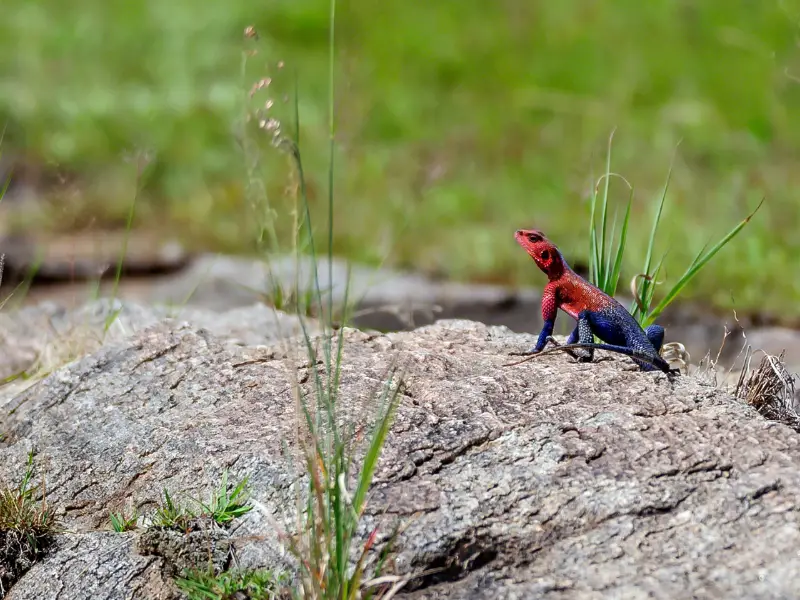
If you know what to do, looking after a red headed agama is not too complicated. Make sure that you are handling them correctly, and giving them the right food, water, and supplements.
Food And Water
Red headed agamas are carnivores. Therefore, you want to give them as much high-quality protein as possible.
Mealworms, crickets, and superworms make a good base diet, and frozen pinkie mice and thaws make for a good occasional treat.
You should feed your agamas between two and three times per week.
If you are feeding them crickets, you should give them between 15 and 20 crickets per feeding session. For super worms, aim for around 10 each time.
If you’re feeding your agama(s) mealworms, then you’ll need to give them between 40 and 50 mealworms. You can also give your adult lizards a pinkie mouse on occasion.
We also recommend dusting the feeder insects with calcium and multivitamin powder to keep them healthy.
Remember, water is just as important as food! You need to make sure that your agama always has fresh and clean water.
Keep an eye on their water and replace it when empty or dirty. A good rule of thumb is to replace their water every day.
Handling
Red headed agamas are not aggressive. However, they can become a bit jumpy and stressed if they are overhandled, especially when you first get them.
It’s a good idea to try to handle them as little as possible in the beginning. However, they will get used to being handled over time though so just be patient.
Common Health Issues
Red headed agamas are generally hassle-free to raise.
They can develop some health issues, like metabolic bone disease, as they get older.
To prevent this, you should give them vitamin D powder and ensure that their tank has a UVB light.
Breeding
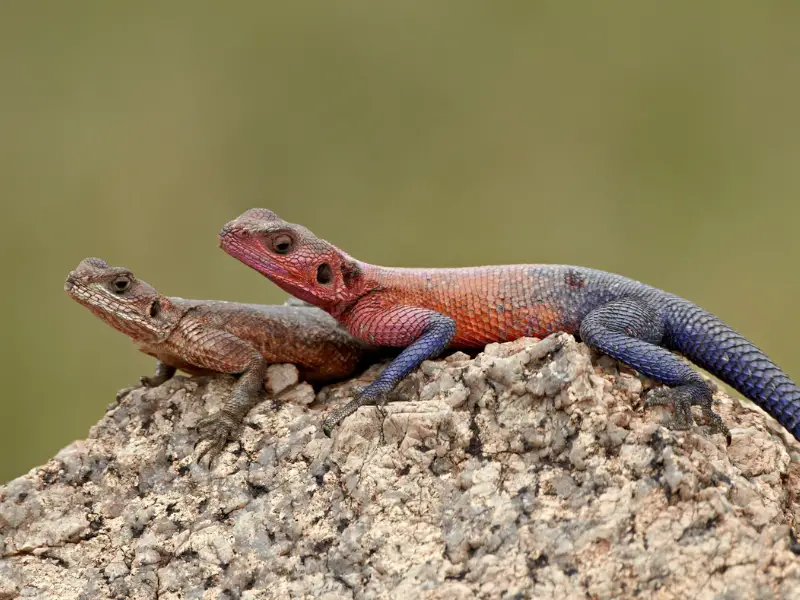
Breeding is not a complicated process. The easiest way to facilitate breeding is to keep a male in an enclosure with at least one female.
Avoid putting two or more males in the same enclosure as they could fight and hurt one another.
It’s a good idea to introduce the male to the female/s in Spring, as the days start to get a bit longer.
Females must get enough calcium while pregnant, so it is important to invest in calcium supplements.
Once you suspect pregnancy, you should put a box in the tank that the female can use to lay her eggs.
Female agamas can lay up to 20 eggs. Once laid, it’s important to remove the eggs from the egg-laying box as soon as possible and place them into an incubator.
This incubator should have a constant temperature, which should be approximately 85°F.
Leave the eggs in the incubator until they hatch. This should be around 3 months after the eggs were laid.
Choosing And Buying A Red Headed Agama
The red headed agama is one of the most affordable reptiles out there and should only cost you around $25 each.
You can buy them online or from your local pet store – just make sure you choose a reputable breeder or source to ensure you get a healthy lizard.
Remember, while the agama itself is not too expensive, you need to consider all the associated costs. The food, lighting, and enclosure can be pretty expensive.
That said, these reptiles are beautiful and fun to keep as pets. They also get used to being handled, making them great for beginner to intermediate reptile owners.
If you’re a new lizard owner, check out this guide on some common mistakes to avoid.

